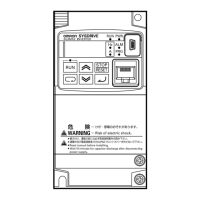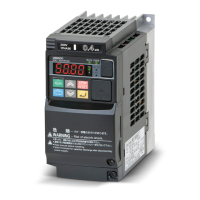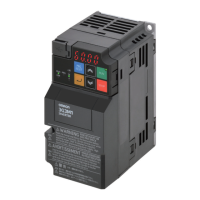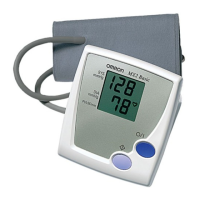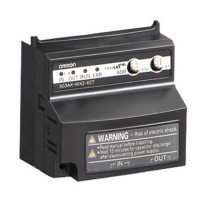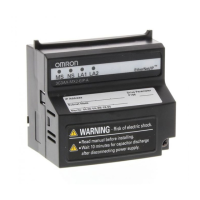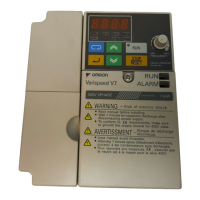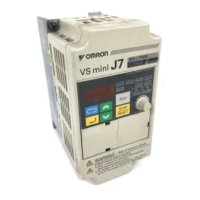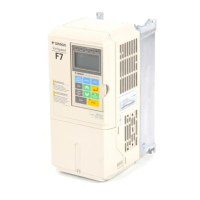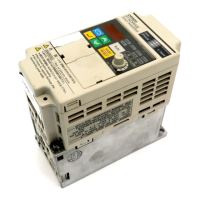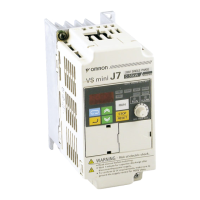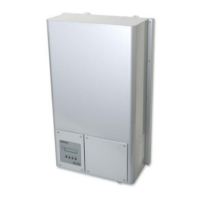6-1-3 Motor Parameter Settings
•
Normally, you perform offline auto-tuning to set motor parameters.
However, if the offline auto-tuning process is aborted, for example, when the inverter does not reach
50% of its rated current during auto-tuning, you need to set the motor parameters manually.
•
To configure the motor parameters manually, set the 1st/2nd Motor Parameter Selection
(H002/H202) to 00 (Standard motor parameter).
To maximize the performance of vector control, adjust the parameter values according to your motor.
•
Obtain your motor’s datasheet from the motor manufacturer and set each motor parameter.
The following values must be set as 50-Hz converted data for one phase in Y-connection.
Winding resistance
on primary side of motor (H020/H220)
: Set the wiring resistance (in ) on the primary side of the
motor for one phase in Y-connection.
Winding resistance
on secondary side of motor (H021/H221): Set the wiring resistance (in ) on the secondary side of
the motor for one phase in Y-connection.
Motor leakage inductance (H022/H222) : Set the leakage inductance (in mH) of the motor for one
phase in Y-connection.
Motor no-load current (H023/H223) : Set the no-load current of the motor, or set the current
value measured when the motor is in isolated no-load run
at 50 Hz.
Moment of inertia (H024/H224) : Calculate the motor-shaft conversion of the moment of
inertia of the load machine, add the moment of inertia of
the motor to it, and set the sum.
•
After setting each motor parameter, adjust the parameter values according to 6-1-4 Adjustments for
Sensorless Vector Control on page 6-10.
•
1st/2nd Speed Response (H005/H205) are parameters to adjust the speed response of sensorless
vector control. Increase the set value to enhance the responsiveness and decrease it if motor hunting
occurs.
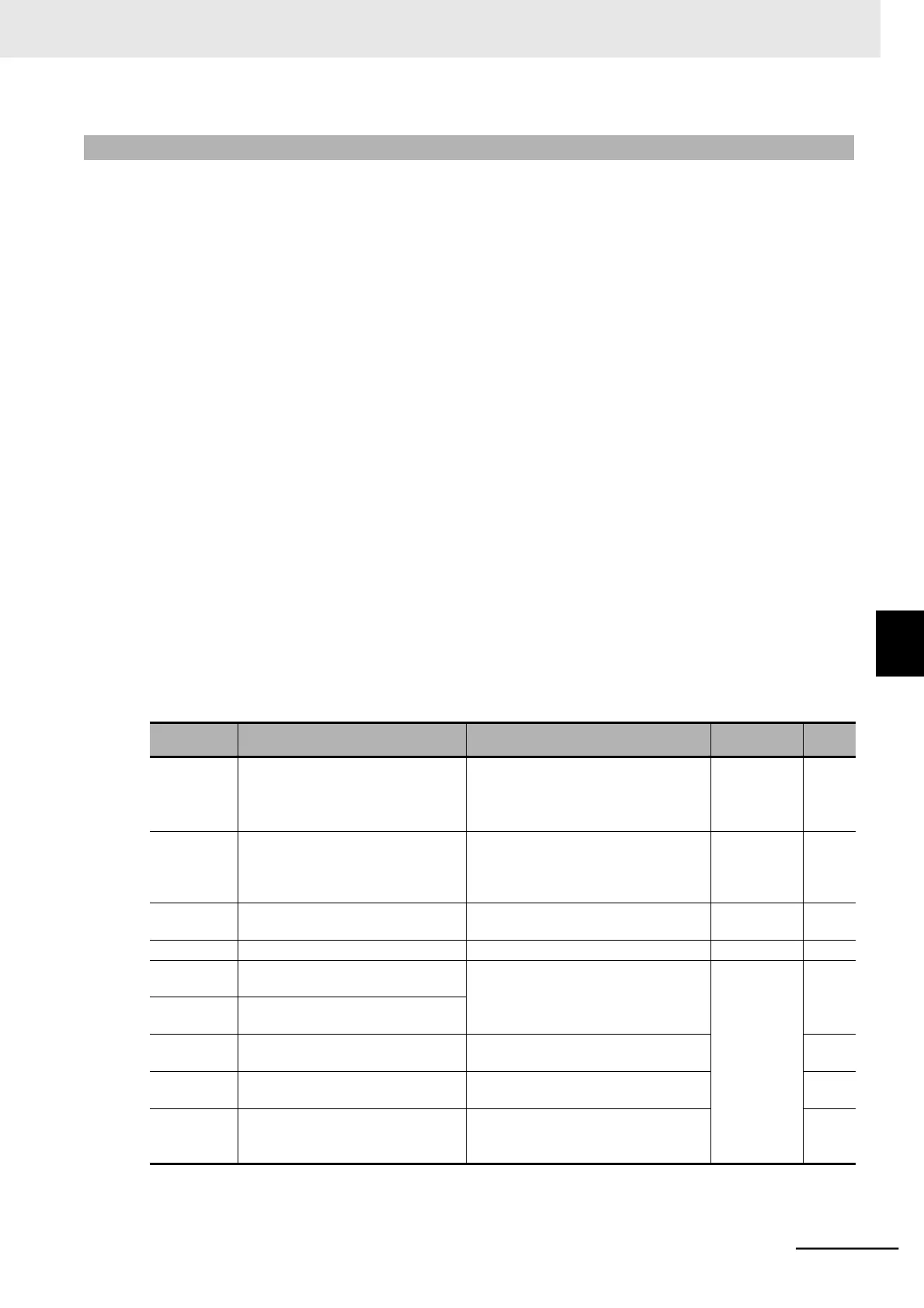